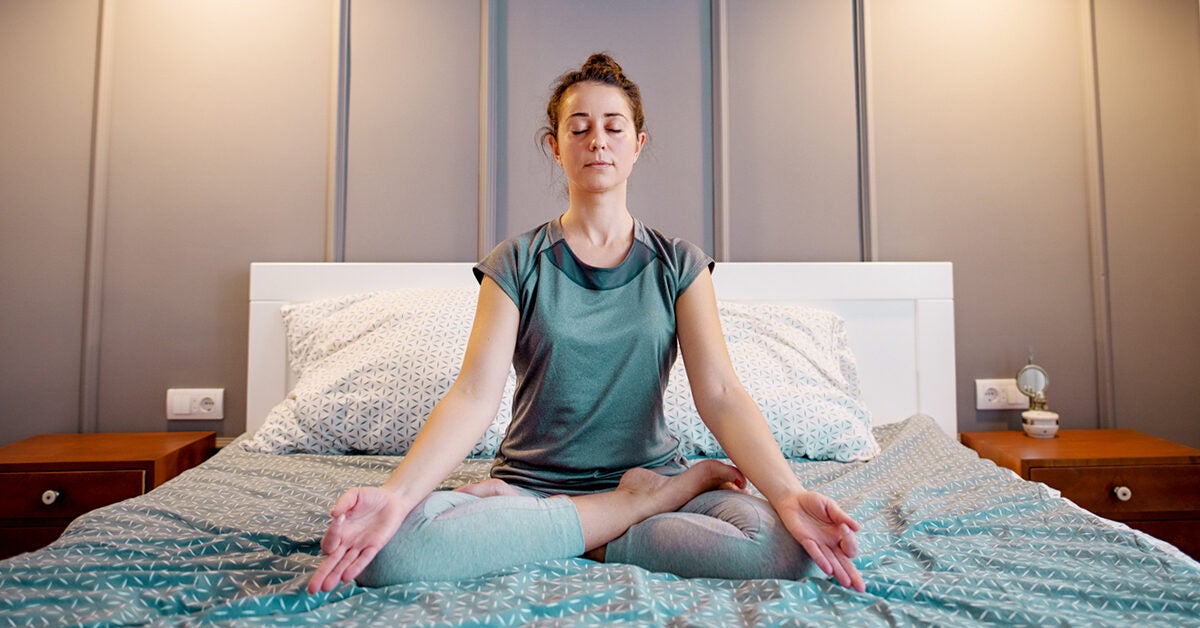In the hustle and bustle of modern life, finding a peaceful night's sleep can be challenging, especially for women juggling various roles and responsibilities. Top 10 Sleep Meditation Tips For Women Sleep meditation can be a game-changer, offering a natural and effective way to enhance the quality of sleep. Here are the top 10 sleep meditation tips crafted specifically for women.
What is Sleep Meditation?

Sleep meditation involves calming the mind and body to facilitate restful sleep. It often incorporates mindfulness techniques, helping women detach from daily stressors and prepare for a peaceful night's sleep.
Benefits for Women
For women, sleep meditation offers a range of benefits, including improved sleep quality, reduced anxiety, and enhanced overall well-being. The practice empowers women to take control of their sleep hygiene.
Creating a Tranquil Sleep Environment

The Role of Bedroom Setup
A serene bedroom environment is paramount for quality sleep. Decluttering, organizing, and personalizing your sleep space can create a calming atmosphere conducive to relaxation.
Read also: Health Benefits Of Daily Meditation
Choosing Calming Colors and Decor
Soft, muted colors and minimalistic decor can transform your bedroom into a tranquil haven. Consider incorporating elements that bring joy and peace, such as cozy blankets or soothing artwork.
Establishing a Consistent Bedtime Routine

The Power of Rituals
Creating a bedtime routine signals to the body that it's time to wind down. Engage in activities that relax you, whether it's reading a book, taking a warm bath, or practicing gentle stretches.
Incorporating Relaxation Techniques
In addition to a routine, integrating relaxation techniques such as gentle yoga or progressive muscle relaxation can further prepare your body and mind for restful sleep.
Mindful Breathing Techniques

Deep Diaphragmatic Breathing
Deep breathing engages the diaphragm, promoting relaxation and reducing stress. Practice deep diaphragmatic breathing by inhaling slowly through your nose, expanding your diaphragm, and exhaling through your mouth.
Read also: Top 10 Sleep Meditation Tips for Women
Box Breathing for Relaxation
Box breathing, a technique used by many for relaxation, involves inhaling, holding the breath, exhaling, and pausing in a rhythmic pattern. This method calms the nervous system, making it an effective pre-sleep practice.
Progressive Muscle Relaxation

How to Release Tension
Progressive muscle relaxation involves systematically tensing and then relaxing different muscle groups. This technique helps release physical tension, preparing the body for a more comfortable sleep experience.
Focusing on Different Muscle Groups
Start from your toes and work your way up, tensing and then relaxing each muscle group. This mindful process helps bring awareness to areas of tension, promoting a state of deep relaxation.
Guided Imagery for Peaceful Sleep

Creating Mental Landscapes
Guided imagery involves envisioning calming scenes or scenarios. Whether it's a serene beach or a tranquil forest, immersing yourself in these mental landscapes can divert your mind from stressors, promoting a restful state.
Using Guided Meditation Apps
Take advantage of guided meditation apps that offer sleep-focused sessions. These apps often provide a variety of narrated meditations tailored to help women relax and fall asleep more easily.
Incorporating Aromatherapy

Choosing Relaxing Scents
Aromatherapy, through the use of essential oils, can have a profound impact on sleep. Scents like lavender, chamomile, and ylang-ylang are known for their calming properties and can be diffused or applied before bedtime.
Using Essential Oils Safely
When using essential oils, dilute them properly and use a diffuser for even distribution. Be mindful of individual sensitivities and consult with a healthcare professional if you have concerns about using essential oils.
Limiting Screen Time Before Bed

The Impact of Blue Light on Sleep
Exposure to blue light from screens can disrupt the body's natural sleep-wake cycle. To improve sleep quality, limit screen time at least an hour before bedtime.
Read also: Discover Your True Nature With This Guided Mirror Meditation
Establishing Digital Detox Habits
Consider implementing a digital detox routine by replacing screen time with calming activities. Reading a physical book, practicing gentle stretches, or listening to soothing music can be excellent alternatives.
Cultivating a Positive Sleep Mindset

Shifting Negative Thoughts
Combating negative thoughts about sleep is crucial. Replace worries about insomnia or restlessness with positive affirmations and thoughts about the benefits of sleep meditation.
Affirmations for Better Sleep
Create personalized sleep affirmations that reinforce positive sleep habits. Repeat these affirmations before bedtime to reinforce a positive mindset and promote relaxation.
Conclusion
Incorporating sleep meditation into your nightly routine can be a transformative journey towards better sleep and overall well-being. Experiment with these tips, personalize them to your preferences, and embark on a path to more restful and rejuvenating nights.
FAQ's: Top 10 Sleep Meditation Tips For Women
What meditation is good for sleep?
Focusing on the present while engaging in mindfulness exercises enables one to perceive feelings and ideas without passing judgment. Similar to progressive muscular relaxation and diaphragmatic breathing, mindfulness can ease anxiety and help people unwind before bed.
How do you make a girl deep sleep?
- Work Out Daily.
- Eat More Fiber.
- Find Your Inner Yogi.
- Avoid Caffeine 7+ Hours Before Bed.
- Resist that Nightcap.
- Create a Relaxing Bedtime Routine.
- Make Your Bedroom a Sleep Sanctuary.
- Listen to White and Pink Noise.
How to increase deep sleep meditation?
The same gentle, relaxed focus that we use during the day should be applied to meditation for sleep. Allowing the body to unwind and the mind to gently go off to sleep is important. If we try to force sleep, we could induce tension and extra thoughts. Instead, we should do these things gently.
What is the 10 3 2 1 0 rule for sleep?
The 10-3-2-1-0 sleep rule is something I recently started: ten hours before bed, no caffeine; three hours before bed, no food or drink; two hours before bed, no work; one hour before bed, no screen time; and zero, the number of times you hit the snooze button.
What is the best way for a female to sleep?
Improved sleep can be achieved by wearing an eye mask to sleep, avoiding late-afternoon naps, attempting relaxation techniques like deep breathing and meditation, and going to and from work at the same time every day. In women nearing menopause, hot flashes cause only around 27% of nightly awakenings.